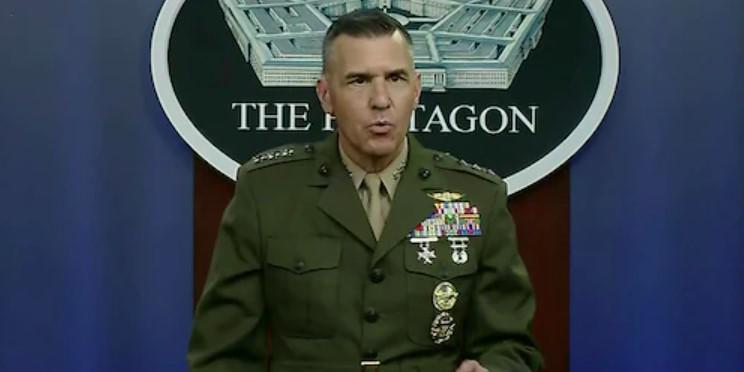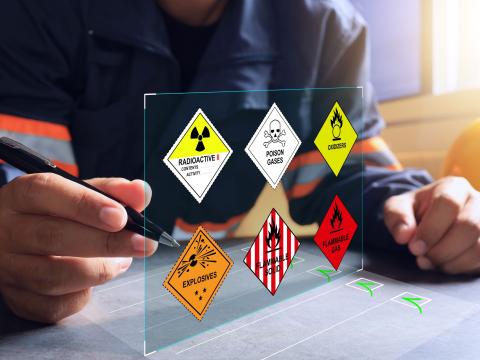Signed JADC2 Strategy Provides 'Teeth' to Complicated Effort
The U.S. military’s sweeping effort to build a common command and control system to unite warfighting across all domains—sea, land, air, space and cyberspace—now has a formal policy to guide its further development. Secretary of Defense Lloyd Austin has officially signed off on the Joint All-Domain Command and Control (JADC2) strategy, reported Lt. Gen. Dennis Crall, USMC, director, Command, Control, Communications and Computers/Cyber; and chief information officer, The Joint Staff (J-6), on Friday during a press conference at the Pentagon.
“It is a clear recognition by the secretary on the nature of the fight we expect to have in the digital age,” Gen. Crall stated. “The second things that is does, is that it brings together some rather disparate communities within the department and has us work together for a common cause. And that is needed to have happened because there are OSD [Office of Secretary of Defense] equities, service equities, Joint Staff and combatant command equities.
The J-6, who shared that the Pentagon would soon be releasing an unclassified version of the strategy, confirmed that the policy would “remain encouraging” to JADC2 experimentation and testing, but at the same time would bring about a necessary “sense of order.”
Each of the services had begun separate multidomain operation initiatives, building the associated command and control systems or platforms—such as the Air Force’s Advanced Battle Management System (ABMS) or the Army’s Project Convergence. Without convergence under an all-encompassing strategy formulated by the Joint Staff—one that has “teeth”—those efforts are at risk of becoming separate, stove-piped solutions, the general said.
“If left to go on for some point of time, without some level of framework, or order to that process, we could find ourselves at odds with each other, meaning that we may not be interoperable with each other both in procedure and also within that speed of data sharing,” Gen. Crall said.
Moreover, the formal process provides some natural competition for organizations preparing solutions for joint all-domain operations. “It allows us to do some best of breed picking, on who was solving those problems the best way,” the general emphasized. “And more importantly what we are going to avoid is vendor lock or proprietary solutions that have plagued us in the past. We want this to be open source. We want to use the same technology and mindset that our industry partners use today.”
To help choose who will do what, the strategy dictates two formal processes. The recently signed cross-functional team (CFT) charter for JADC2 provides an initial governance forum, the general said. “[It is] the “widest table setting of attendees,” and “it provides an atmosphere to present where you are at and is also gives the audience the opportunity to lay flat any differences or to project where we may have challenges moving forward in the future,” Gen. Crall explained.
After the CFT’s work is completed, recommendations that come from the team can be presented to the Joint Requirements Oversight Council (JROC), which can elect to “codify those ideas as requirements,” the J-6 clarified. “That has been a weakness in the past as we have not really set requirements. Without requirements people do what is right in their own eyes. The JROC codifies those and then we move those through an area risk assessment to prioritize what those investment strategies should be and then we have the ability to take them to a D-MAG [Deputy's Management Action Group], where the deputy secretary [Kathleen Hicks] can balance those requirements across the department and makes those decisions for us to implement. We’ve had pieces of this, but we’ve never has these put comprehensively together in one package and set and codified.”
In addition, Gen. Crall acknowledged that the department would still be pursuing solutions to address the key dependencies of JADC2, including cloud, network improvements, identity management and zero-trust architecture.
The unresolved nature of the Joint Enterprise Defense Infrastructure (JEDI) enterprise cloud solution—held up in a legal battle over the contract award—does present a challenge, he confirmed. “We are clearly in need of cloud, to include a deployable, tactical cloud, to do this type of processes and data storage at the edge,” Gen. Crall stated. For the continued experimentation phase of JADC2, the department does “have adequate resources but going forward, but the absence of an enterprise cloud solution will clearly inhibit us in the future.”
The J-6 also is planning to host the next JADC2 data summit next week, building on the success of an initial discussion on JADC2-related information sharing in January, co-hosted with Dave Spirk, chief data officer of the Defense Department, and another such meeting in April. The data summits are bringing together military’s other chief data officers, data scientists, subject matter experts and officials from the department, the joint force, defense agencies, the services, the U.S. combatant commands, the intelligence community, the Department of Homeland Security and NATO. The June event will be the second “larger” summit, Gen. Crall noted.
“This really starts our work,” he stressed. “It is now implementation time. Planning is good, talk is good, and now it is delivery time. And we’ve been given the clear signal to begin.”





Comments